Just before the 1861 Census was taken on 7th April 1861 modern Italy came into being as most of the independent states of the Italian peninsular and the Two Sicilies were united under King Victor Emmanuel II of the House of Savoy which included Piedmont and Sardinia. Although Rome was declared the Capital the Italian Government couldn’t take control of the City as the Papal States and the Pope were protected by a French Garrison. Great Britain was not involved in any major wars although there were numerous small scale operations and wars throughout the Empire over the next decade by British troops in North America, India, New Zealand, Africa and Asia.
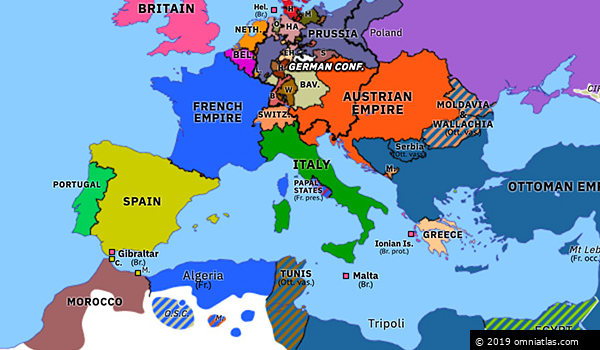
The main focus defensively at home was the massive Palmerston Fort building programme to protect Britain and the Royal Navy which was critical in safeguarding the Empires supply routes. It was a reaction to the first Ironclad battleships being launched, an advance in artillery technology which had led to significantly more powerful guns and ammunition as well as a perceived threat from the French under the Emperor Louis Napoleon. There was a large programme in Plymouth to protect both the anchorages in the Sound and Devonport. On the Island this included the lower Casemated Battery, the Upper Battery and the two levels of underground magazines and ammunition tunnels. Nationally the Post Office Savings Bank started up in 1861. It was popular and although many could not afford to save the expanding middle class had a safe deposit for their money which paid a good rate of interest and was protected by the Government.

Locally in the Three Towns the Census showed that in the decade between 1851 and 1861 Plymouth had grown by just over 10,000 people to 62,599 living in 6,084 dwellings averaging at 10 inhabitants per building. In Devonport the population had swollen from 38,180 to 50,440 housed in 4,189 dwellings averaging 12 per building whilst in Stonehouse the numbers had jumped by over 3,000 to 14,343 living in 1,245 dwellings at over 11 per building. The cramped conditions were around double the national average. Prostitution was fairly widespread. The first Penitentiary for Women had opened in 1832 but the conditions were regarded as harsh and as a consequence the House of Mercy for Fallen Women had opened in 1859 and was looking after 64 women. However the size of the problem led to the Female Home for Unfortunate Women opening its doors for the first time in 1861 with 17 inmates aged between 14 and 38 years old. All Three Towns had separate Police Forces. The Plymouth Force was 57 strong in in 1861 although the Devonport Force was regarded as the most aggressive and recruited the strongest men available as they dealt with most of the large Military population. There was a Workhouse in each of the Three Towns, Plymouth had 452 inmates in 1861, 416 were living in the Devonport Workhouse and 73 at Stonehouse. Both Plymouth and Devonport had civilian prisons with 52 and 77 prisoners respectively whilst the Military Prison at Devonport had 290 inmates either convicted or awaiting trial. The numbers for the military prison aren’t that surprising. Offences were punished more severely than if they were tried at a civilian court and the nature of the offences meant that you were more likely to commit an offence under Queens Regulations than a civilian would under common law which the military were also subject to. As an example of the high military crime rate at the time desertion or absence was running at 10% in the Army. The vaccination programme was still struggling to be implemented in 1861 especially amongst the lower class. The Western Morning News argued in favour of legally enforcing penalties to those unvaccinated so, in their words, the prejudices of the few don’t interfere with the welfare of the many.
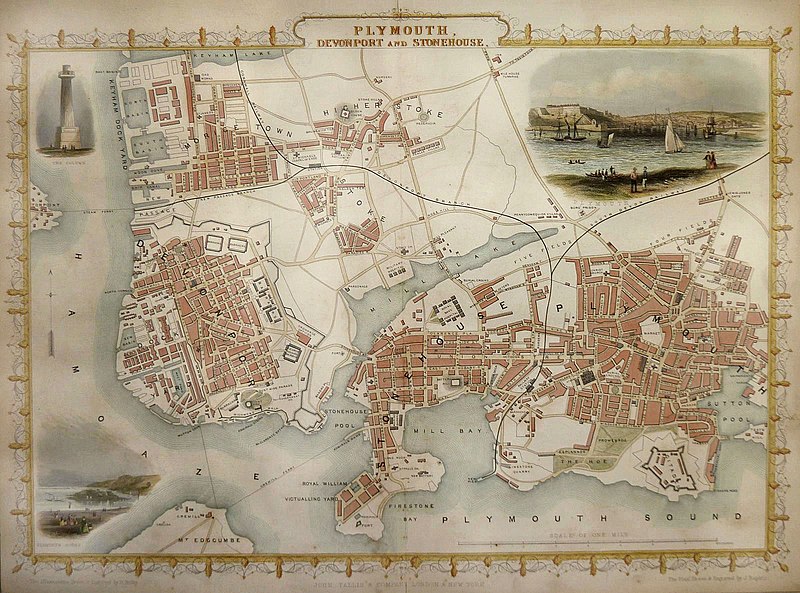
On the Island work on the Casemates, new Upper Battery and underground magazines had begun. The plans for the whole Plymouth area were drawn up and overseen by the Plymouth District Office of the Royal Engineers under Colonel Owen. At each site within the District Colonel Owen would assign a Royal Engineer Officer or sometimes two to oversee the work and a Royal Engineer SNCO Clerk of Works who would work directly with site Foreman. Most of the work was awarded to large London contractors but a Plymouth firm, Roach, got the contracts for the works at Screesdon and Cawsand whilst the contract for the Island was given to Messrs Hubbards, a Stonehouse builders, who also won the tender for Fort Picklecombe. I believe the Foreman for the Island was a Mr Harvey. At the time there was a Master Gunner, Joseph Fullerton and his assistant Gnr Beacham plus a 90 man detachment from 3rd Brigade Royal Artillery manning the Island with Charles Warren, a civilian running the Island Canteen. Just after the Census was taken there was a birth on the Island, Richard Dargan. Richard’s father, another Richard was serving in the Royal Artillery that had replaced the one on the Island during the Census. The 1871 census shows Richard Junior living in Woolwich with his mother and them receiving an allowance from his father. His father was discharged in 1869 but Richard followed him into the Artillery enlisting at Woolwich in 1875 but was discharged as medically unfit in 1878.
The 1961 Census recorded Richard Routledge as a Colour Sergeant living with his wife Mary Ann and their five children, William (8), John (6), Mary J (4), Emily E (2) and Eliza C (1) in the Devon Militia Artillery Stores in Devonport. In total there were 36 people living at the Stores Depot, 11 soldiers, 3 boys and 22 females. The next 10 years would see a number of changes for both the Routledge family, Island and the Three Towns.
The recently raised 13th Devon (Keyham) Artillery Volunteers part of the Devon Artillery Militia to which Richard belonged had a healthy 104 volunteers by early March. All the Militia companies would normally attend an annual 27 day training camp in the spring. New recruits and the permanent staff would usually parade 14 days prior to the annual camp to train the recruits to the standard required to take part in the camp. It’s not clear what exact job Richard did but his rank suggests he was in the Quartermasters Department and he would certainly have been involved in preparing for the annual camps by ordering the relevant stores and supplies, booking areas to train on and quite likely instructing during the recruit camp. In 1861 all the Militia companies were given notice to parade at Devonport on 8th May for the annual camp. Company and Battalion drill evenings also took place throughout the year along with inspections. The Band would also often be in attendance especially for marching drill. Live fire practice would also take place occasionally at the weekend from the Citadel or on the Island. Targets would be put out in the Sound often under the supervision of the Master Gunner on the Island. The companies would also have their own social calendar with the major event being the Annual Ball. The 12th Devon (Dockyard) Artillery Volunteers who had been only raised in the last couple of years would hold their first Ball in January of 1862. For Richard there would also be the daily duties and routine maintenance of the buildings and stores. For example in July the outside of the Militia stores building was painted.
Sport was still organised on a challenge basis rather than organised leagues or cups. The Military took part although often it was Officers only teams. In May 1861 a combined Devon Artillery Militia and South Devon Militia Officers cricket team took on and beat the officers of the 53rd Regiment of Foot at the Plymouth Cricket Club Ground which at the time was on the Hoe. In the same month the Palmerston Fort building programme had begun in earnest. The scope can be seen as contractors were reported by the Western Morning News to have begun working on one or more projects at Mount Wise, Devils Point, Tregantle, the Breakwater Fort, Bovisand, Staddon Heights, Hooe Lake, Cattdown, Cawsand, Drake’s Island, Ernsettle, St Budeaux, a new dock and salt meat store at Devonport, a Naval Barracks at Keyham, improvements at North Yard and Bull Point and an enlargement of the Royal Marine Barracks at Stonehouse. The total estimated cost, just for the Plymouth defences not the nationwide programme, was reported as just over £3 million and this did not include the cost of the armaments. Late in the year the news broke that Prince Albert, husband and Consort to Queen Victoria had died at the relatively young age of 42. He was influential in British political life and despite his wish that no Public Memorials should be erected to commemorate him many were including the Royal Albert Hall in London.
Early in 1862 Mary Ann gave birth to her 6th baby, another daughter, putting the girls 4-2 up on the boys in the Routledge household. Richard and Mary Ann decided on the name Annie for their new born. Her elder siblings would most likely be at school most likely at one of the free schools that catered for the children of soldiers. Richard may have been able to spend longer with the family as a decision was taken to reduce the Devon Artillery Militia annual camp to 21 days starting in 1862 although recruit training remained at 14 days.
HMS Impregnable, commissioned in 1810, was removed from the Reserve Fleet and began life as a Training Ship for Boy Sailors at Devonport in 1862. The Impregnable continued in this role until 1886 when HMS Howe, renamed HMS Bulwark, replaced her. In 1888 when the Impregnable was renamed HMS Kent the Bulwark (originally the Howe) was renamed HMS Impregnable.
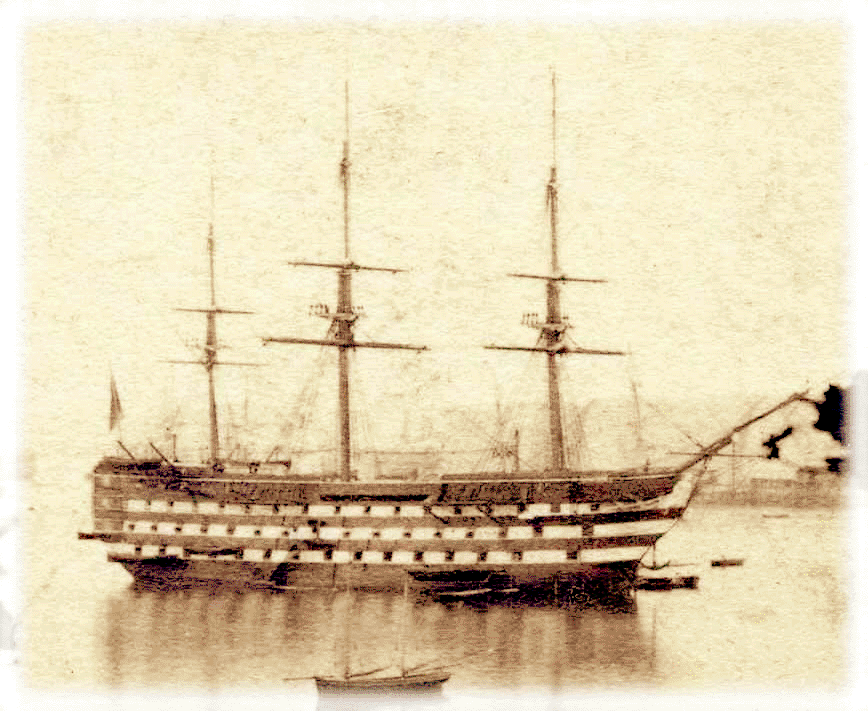
The Plymouth Lifeboat Station had ceased to be operational in 1840. Funds were raised for a new Lifeboat Station which was built at a cost of £159 in 1861. After a further round of raising funds a new lifeboat for Plymouth was bought and made operational in February of 1862. It was called “The Prince Consort” in honour of the recently deceased Prince Albert. A large parade was organised for the inauguration of the boat and it was borne on a horse drawn carriage through the Three Towns accompanied by the Royal Marines Band. Parades such as this always drew large crowds and the new lifeboat was launched at Royal William Yard. After sea trials it entered service and was based at the new Life Boat Station on the West Side of Mill Bay in front of where the current Continental Ferry is located. The main source of funds to keep the boat and station operational were local subscriptions.
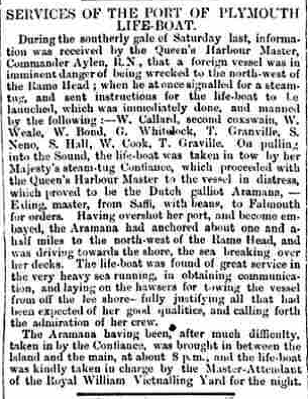
Public subscriptions were a standard way of raising money for local projects and were used to help party fund the Derry’s Cross Clock Tower. William Derry was a local businessman and whilst he was the Mayor of Plymouth from 1861-1862 he presented the Town with a 4 faced Clock. When placed inside a tower the 4 faces would be illuminated, it would run for eight days before needing to be rewound and would chime on the hour. Local subscriptions and a donation from Mr Derry raised the funds to construct a tower to house the clock however the Local Council didn’t have the authority to build a Clock Tower so they included three water fountains so it could be constructed as they had the power to build fountains!! Work on the tower began in August and was finished before the end of the year.

Aprils Fools Day was alive and kicking back in 1862 as well but with less distractions and more time to prepare the pranks could be quite elaborate. On the 1st April a number of handbills began to circulate in the Three Towns that a Signor Soldino would amaze all watching by attaching wings to his body and flying from the Hoe across the water to Devils Point and back again. Thousands of people showed up to watch and waited for Signor Soldino to appear which he never did and a rainstorm started to disperse the crowd as they realised they had been hoodwinked around 4pm. The papers interpreted Soldino as being for “You’ve been Sold-I-(K)no(w)” meaning you’ve been had. A rumour started a few years later that the prank was a result of a bet laid by an officer stationed on the Island with his fellow officers that he could get 20,000 people into the Hoe but this was never proven one way or the other.
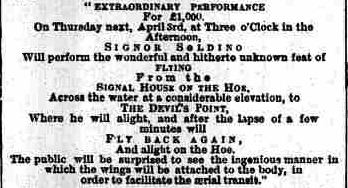
1862 Plymouth Cricket Club moved from the Hoe to opposite South Devon Place in what is now Embankment Road. Matches were still one off challenge matches although they were taken seriously and the Plymouth club employed a professional bowler. Overarm bowling was legalised for the start of the season. Four home club fixtures were arranged for the summer of 1862 along with a Gentlemen of Devon match against the Gentlemen of Cornwall with a combined Devon and Cornwall match against the United Eleven of All England. The following year in 1863 the FA formed and decided on a unified set of rules out of the differing Cambridge and Sheffield rules. As with cricket there were no leagues or cups and matches were played on a challenge basis.
Charity and fund raising for various projects were still the main providers of any type of social security net. In March 1863 public subscriptions paid for a huge dinner for the poor in the Plymouth Market Place. Over 1,000 men and women aged over 60 attended. The Modbury Band played during the meal of roast or boiled beef with Plum Pudding accompanied by beer which according to reports had run out well before the end of the meal!! However not all the poor received help there were constant complaints about rough sleepers in the limekiln at Millbay. The rough sleepers were accused of being the source of local criminal activity and the Police put on extra patrols to try and alleviate the problem but all it likely did was move the problem to a different place. Limekilns were common at the time and used to heat limestone to produce quicklime which was used in agriculture and construction. It used for whitewash which was used on walls to reflect and increase the effectiveness of the lighting at the time, the underground magazines on the Island incorporated a lime store so the walls inside the complex could be whitewashed regularly.
The following month the Commander-in-Chief of the military, HRH the Duke of Cambridge was in Plymouth visiting all the ongoing Palmerston Fort works including those on the Island. Whilst the Devon Artillery Militia wasn’t part of his itinerary the Duke and his large retinue were in Devonport for part of the visit so Richard probably was involved in cleaning the Depot should it be in the line of sight of the Duke during his visit. As can be imagined the Fort building programme was huge involving huge amounts building materiel and supplies which in turn would present opportunities for theft. Hubbards, the contractors for the Island and Fort Picklecomb had hired premises for storage at Royal William Yard. The Hubbards Foreman, Joseph Deacon had noticed materiel, mainly timber, going missing over a number of months and started to mark the timber in the hope of tracing it if it were stolen. Some of the stolen timber then appeared in a neighbouring shipwrights yard who was subsequently arrested and prosecuted along with a waterman who moved the timber to the shipwrights. The case came before the Plymouth magistrates in September 1863 but was sent to the County Court for trial.
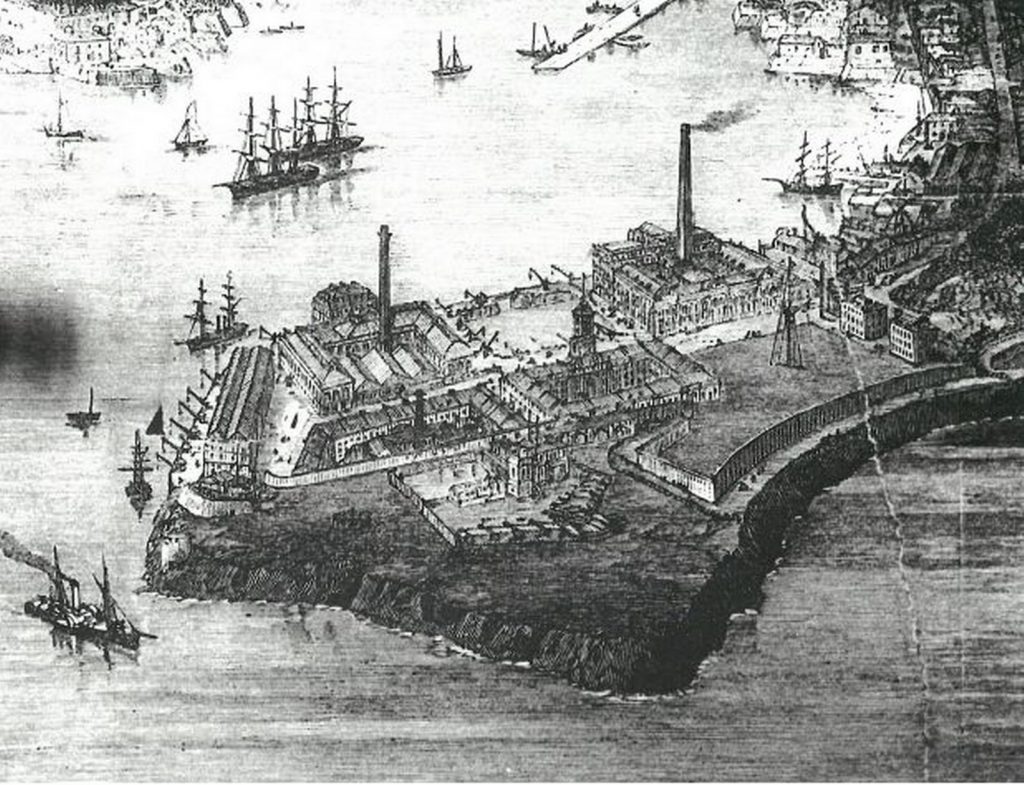
A month after the Duke’s visit the first searchlight experiments took place in Plymouth to evaluate Mr Hearder’s Electric lights for military use. Thousands of locals gathered on the Hoe to watch the experiments. The experiments were conducted under the command of the aptly named Captain Drake of the Royal Engineers. The lights were set up in the Citadel on the Bastion nearest the Hoe. They were battery powered and were expensive to run as large quantities of sulphuric acid were used to recharge the lights. The experiments began at 8.30pm with Royal Engineer Officers deployed to places around the Sound, including the Island towards which the light would be aimed so they could report on the effectiveness of the light. The local youths amused themselves by throwing stones into the beams of light to see what would happen, this was the first time they would have encountered anything as powerful as these lights so it would have been a completely new experience for them. The experiments concluded after an hour or so.
The end of the year saw a fatal boat accident involving some of the garrison from the Island. On Saturday 7th November a group of Artillerymen including some wives were leaving Plymouth Barbican in a hired boat to return to the Island with provisions for the garrison. Single soldiers in the same room would form a mess and pay a subscription to top up their rations and although a married soldier would be rationed the family would not so trips to the markets were not uncommon. The soldiers were sailing the boat themselves and the 9 people on board were Sgt Drew and his wife, Gunners Stevens, Hamlin, Hawkins, Sivley and Johnson plus Mrs Brown and Mrs Wilson. As the boat was tacking under Staddon Heights it seems a barrel of Porter – the Island was still on beer ration as water was unsafe to drink so beer and rum would often be bought back along with food – became loose and upset the trim of the boat causing it capsize. Gunners Sivley and Johnson managed to get Mrs Drew ashore but she unfortunately died shortly afterwards. The remaining six didn’t make it to shore and were drowned leaving only Gunners Sivley and Johnson as survivors.
In December the Royal Albert Hospital, which would become the Royal Albert Hospital and Eye Infirmary in 1874 opened. A weekly report the following year showed it took in 9 in patients during the week making 63 in total, 108 out patients were being treated and 70 patients, a mix of in and out patients were discharged. The hospital was maintained by grants and subscriptions with individual subscription ranging between £1 and £5 annually. Events such as Fetes were held to raise funds and church collections often for specifics like the Children’s Ward were donated.
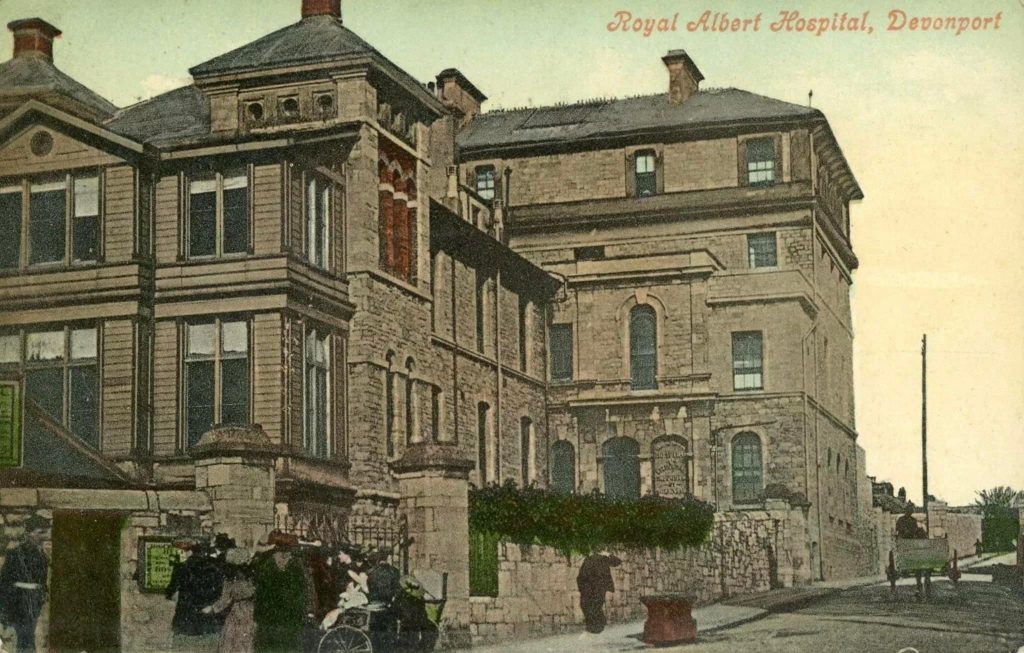
Early in 1864 saw the arrival of another Routledge baby, Frederick Richard, the 7th Mary Ann had given birth to in 11 years. Live Artillery practice was still being carried out from the Citadel and Island aiming at targets towed out into the Sound. On Monday 30th May there was live practice from the Citadel by 68 pounder guns firing 8 inch hollow shot. The targets were taken out in the morning by the Drake’s Island Master Gunner Joseph Fullerton and moored off the east of the Island. Two incidents occurred during the practice. Firstly a near miss when a shot landed around 20 yards from a boat carrying Admiral Dacres. Subsequently a boat crewed by two local watermen, George McCoy and James Hellen, was hit. George was badly injured and taken to the Royal Albert Hospital where he died later that evening. James was unhurt and at the inquest testified that the boat was close to the target buoy and therefore the guns shouldn’t have fired whereas the Artillerymen stated the boat was further away and struck by an unfortunate ricochet. Live firing was immediately halted from the Citadel and transferred to the Island pending the outcome of the inquest and a military enquiry into the rules governing Artillery practice in the Sound. Eventually the Coroner’s Jury at the Inquest returned a verdict of manslaughter on Major General Hutchinson, General Officer Commanding the District so ultimately responsible for the Standing Orders under which the practice was carried out. However the case was immediately dismissed by the Grand Jury at the Exeter Assizes who took the view the death was accidental. Questions were raised in the House of Lords about the way in which live firing was carried out from the Citadel and eventually the Military Staff issued orders banning any gun practice in the Sound, including from Drake’s Island. Fort Bovisand was to be used for Gun practice until further notice. On the Island another baby arrived when Frederick William Thompson was born.
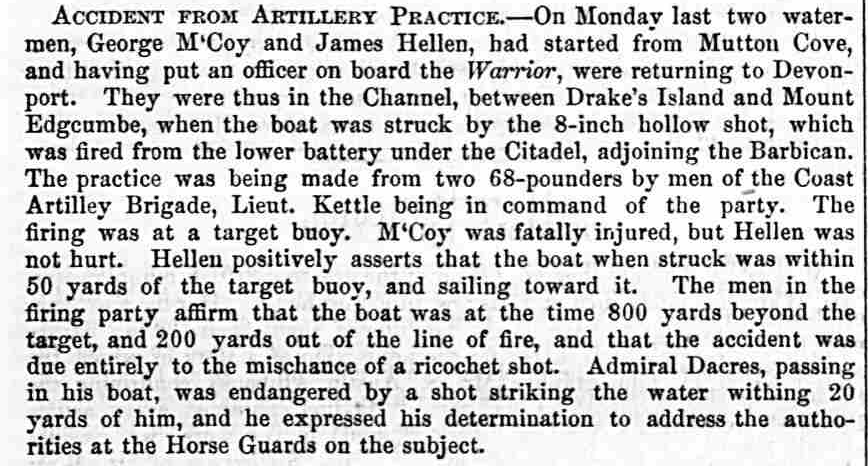
During 1865 the Breakwater Fort less the Iron Blast Shields and the armaments was complete. The blast shields would not arrive until 1870 as Artillery technology continued to advance and there was disagreement about the design. The fort wasn’t armed until 1879 for the same reason not least arguments over whether the Moncreif Disappearing Gun system that completed its trials in 1873 should be incorporated. The same delays in blast shields and arming the Palmerston Forts occurred at most of the forts to a greater or lesser extent.
15th July saw the grand opening of the Duke of Cornwall Hotel. It was built in the Millbay area close to the Western Docks and Railway Station to accommodate the increasing number of travellers, especially richer travellers, arriving at Plymouth looking for more luxurious accommodation. The work, costing £40,000, had taken a couple of years and involved demolishing the Saracens Head Pub. By September it seems the manager of the canteen, Charles Warren and his family had left the Island. I’m not sure why, possibly the tenancy had expired and wasn’t renewed but he was bidding for contract to collect tolls and dues at the Saltash Anchorage. He wasn’t successful and was living at Devonport with his family working as a boat maker in 1871. During the same year Hugh Livingston O’Hara Hosking was born on the Island. The first census that he is recorded on is in 1891 where he is recorded as a 25 year old pharmaceutical student living with his mother Anne and father William in Strood, Kent. His father being in the Army means the family may have been abroad during previous censuses. He married in 1896 and in the 1901 and 1911 censuses he is recorded as living in Snodland, Kent with his wife earning a living as a Chemist in a Cement Factory. He died in 1911 and is buried in Lower Birling, Kent.
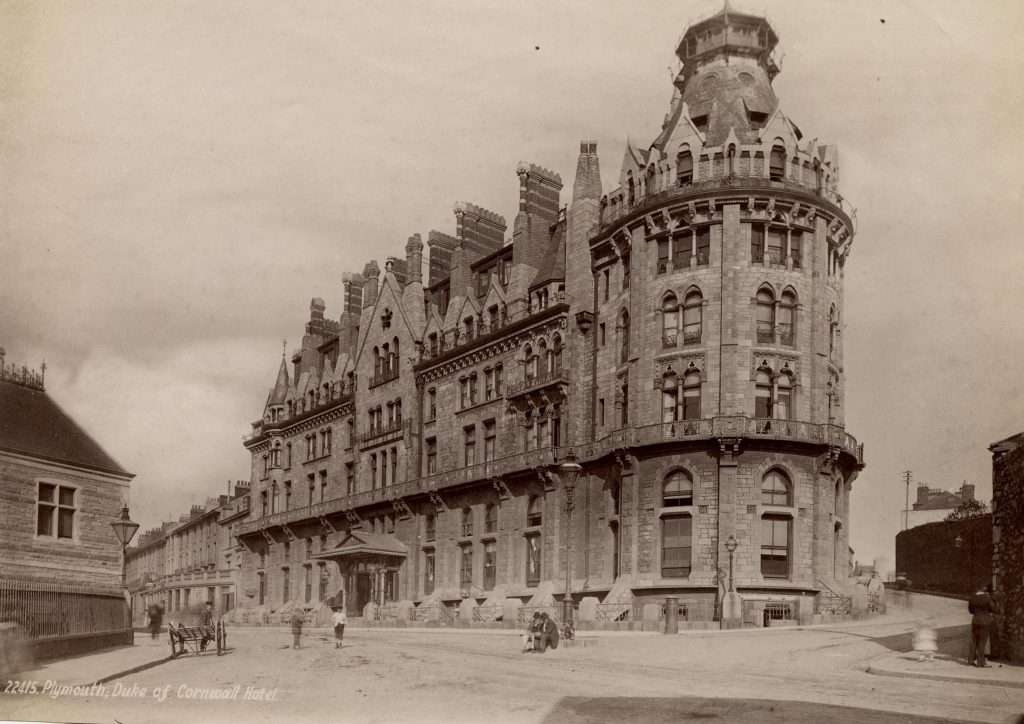
Severe gales could still cause damage and loss of life in the Three Towns despite the protection of the Breakwater. Two occurred within a day of each other in November. The newspapers reported that waves and spray crashed over the back of Drake’s Island as well as over the houses. In the Three Towns the gas lighting blew out, roof slates, chimneys and in some cases walls were damaged and one bridge in Devonport collapsed. In the Sound considerable damage was done to the ships at anchor. A number broke off and ran aground some of which were wrecked others could be saved. A number of masts and sails were lost and at the unloading quays at least two piers were damaged along with a number of ships that were tied up. A week before Christmas there was further loss of life for the Garrison through drowning in the Sound. In the early evening Gunners Charles Branton and Alexander Jack along with Trumpeter William Gouldson had left in the Island row boat heading for Mount Wise. It seems only William was sober and as the boat was by Devil’s Point an argument broke out between the two Gunners that developed into a fight which led to the boat capsizing. William managed to hold onto the boat but both Charles and William who couldn’t swim drowned. The boat eventually drifted onto the rocks under Devil’s Point where William was assisted by the coastguard who had been alerted by a Royal Marine sentry on duty at the Long Room.
During 1866 there was a major fire at the Candle works on Sutton Road. Fire Engines from the Royal Artillery at the Citadel, the Town Brigade and West of England Brigade attended. These would have been horse drawn with large crews mainly used to hand pump the water. The work was strenuous and the crews around 12 strong would have rotated at frequent intervals. There were also engines at the dockyard and one held by the Assurance Company. Stonehouse and Devonport were completely reliant on the military responding to any fire. During the same year Mary Ann give birth again when Maud became the 8th baby born to the Routledges.
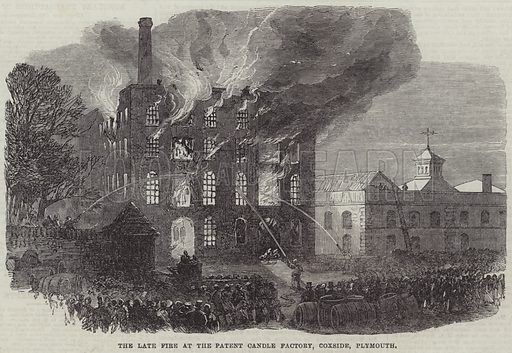
A big change in the way water was distributed within the Three Towns happened in 1867 with the passing of the Plymouth Corporation Water Act. This provided for water to be supplied to domestic and commercial property in return for a yearly rate Bath houses, hospitals and charitable establishments were provided free. The Leat suppling the town was widened and deepened. In another health and sanitation move the Government made the Smallpox vaccination mandatory for all children up to the age of 14.
The first of Cardwell reforms of the Army come into force during 1868. It was as a result of the lessons learned from the Crimean War and Indian Mutiny when despite large numbers the Army struggled to find enough men and supplies for a small expeditionary force. In fact both conflicts had stripped the Army of virtually every fit man such was the poor state of the Army. For the enlisted men it was like being in an open prison. The term of engagement was 12 years without pension with the option of re-enlisting to complete the time required for a pension, 21 years in total unless found to be medically unfit for further service at a medical. Cardwell, the Secretary of State for War wanted better quality recruits and he saw one of the ways to achieve that would be to improve the living and working conditions of the enlisted men. The first reforms began with the purchase of commissions by Officers being abolished. Although Engineer and Artillery Officers had to compete for promotion other arms purchased their commissions to both enter the Army and gain promotion although a few were available on merit. On average a Captains Commission cost £2,400 and a Lieutenant Colonelcy £7,000. Flogging in peacetime was abolished to improve conditions for the men although it was retained as a punishment on active service. Although the use of flogging was falling some units were known as the Bloody Backs due to their Officers zealous use of the punishment. As usual throughout the ages, including recent times, any changes to Army Regulations are resisted by senior officers who wrongly fear that discipline, efficiency and fighting spirit will be weakened. Although the reforms were dragged out over the next few years their opposition was overcome and their fears proved groundless. On the Island 8th Battery, 7th Brigade Royal Artillery took over the garrisoning the Island whilst back in Devonport another Routledge baby arrived, Rosina making it the ninth that Mary Ann had given birth to and the sixth girl. There were also two births on the Island. Margaret George whose father Rees George, was in the Artillery. The 1871 Census shows the family living at Fort Bovisand. A little later Rees must have retired and the family are recorded as living in Epsom during the 1881 and 1891 censuses. Rees must have died between the 1881 and 1891 censuses as his wife is shown as a widow in the 1891 census. Margaret is listed working as a school mistress in the 1901 census. Margaret’s mother possibly died sometime after 1891 as Margaret has moved to Cambridgeshire alone and is recorded as a boarder still working as a school mistress in 1901. The 1911 census shows her working as a Head Teacher at a Girls County School in Rayleigh, Essex and living as a boarder. There is no record of Margaret having married. Griffith Evans was the second birth on the Island during 1868. Griffith was the son of Evan Evans who served in the Royal Artillery until 1870. After Evan was discharged the family moved to Widnes where they were living during the 1871 Census. During the 1881 census the family is living in Runcorn, Cheshire and Elizabeth, Griffith’s mother, is listed as a widow. Griffith followed his father into the Royal Artillery enlisting in 1886. He married Bridget in 1896 and served abroad in Gibraltar for part of his service before being discharged at his own request in 1898. The 1901 census shows the family living in Runcorn and Griffith had two children with Bridget by the time she unfortunately died in 1905. In 1911 Griffith and his two children are living as boarders in Cheshire. On the outbreak of World War I Griffith volunteers and is re-enlisted in the Royal Artillery. He serves as part of the coastal defences in the Royal Garrison Artillery on the Isle of Wight until July 1918.
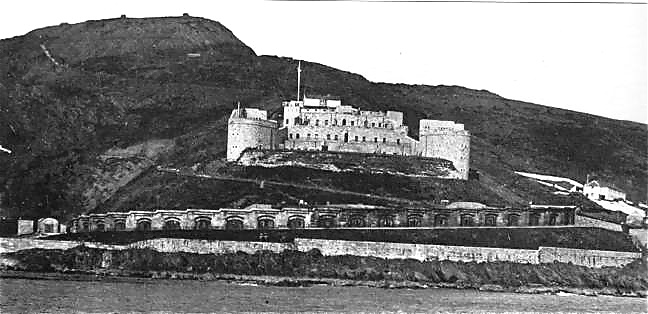
During 1869 new regulations under the Cardwell reforms meant Troops were withdrawn from the self governing colonies who now needed to raise their own defence force. On the Island the men of 8th Battery passed some of their free time fishing and the local papers reported one of the Gunners caught a particularly fine Conger Eel that weighed in at 48lbs, was 6ft 8inches long and 1ft 6inches round. 8th Battery were replaced by 2nd Battery of the 13th Brigade in October and it seems the Artillery rotated the Batteries every year or two between the various forts within Plymouth. In the Sound itself all was not well with the local boatmen who in effect ran the water taxis around the local bays and harbours. The Devonport and Millbay steamboat company had started regular services between Millbay and Devonport undercutting the price charged by the boatmen. The situation resolved itself as the service lasted less than a year as it couldn’t make a profit. An audit published in May into the Palmerston Defences found that nearly all were complete or would be complete soon within Plymouth District apart from the Blast Shields and armaments. By this time some of the planned defences, especially the landward defences north of the Three Towns had been cancelled. Only one of 4 Keeps, Eggbuckland, was ever completed. The works on the Island were being finished off in November when one of the contractors, 24 year old Robert Launder was killed in an accident. Robert worked with his father Henry and they were laying down asphalt on the roof of the casemates on the north of the Island facing towards Plymouth. They had started work early and around 8am Henry sent Robert off to fill a can with water to boil for their breakfast. On his way along the roof it seems Robert tripped and fell into the passage between the casemates and forward magazines, a distance of about 25ft. Robert was unconscious and bleeding but still alive. He was taken to the South Devon and East Cornwall Hospital where he died around 4pm that afternoon without regaining consciousness.
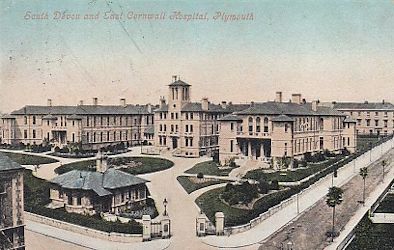
1870 saw more reforms for the Army. The Army Enlistment Act came into force. Service was for 12 years but part could be with the reserves with an obligation to attend training and could be called up to serve overseas. The minimum full time obligation was 6 years for the Infantry and 8 years for the Artillery. The bounty for enlisting was abolished to try and prevent men from deserting and then re-enlisting with a different Regiment to secure another bounty. Deserters if caught were branded by the letter D on their forearm to prevent them from re-enlisting. Queens Regulations were also amended so unsuitable individuals could more easily be discharged from the service. The Post Office introduced a new service in the same year. Postcards were available and with postage costing a halfpenny compared to the minimum one penny for a letter.
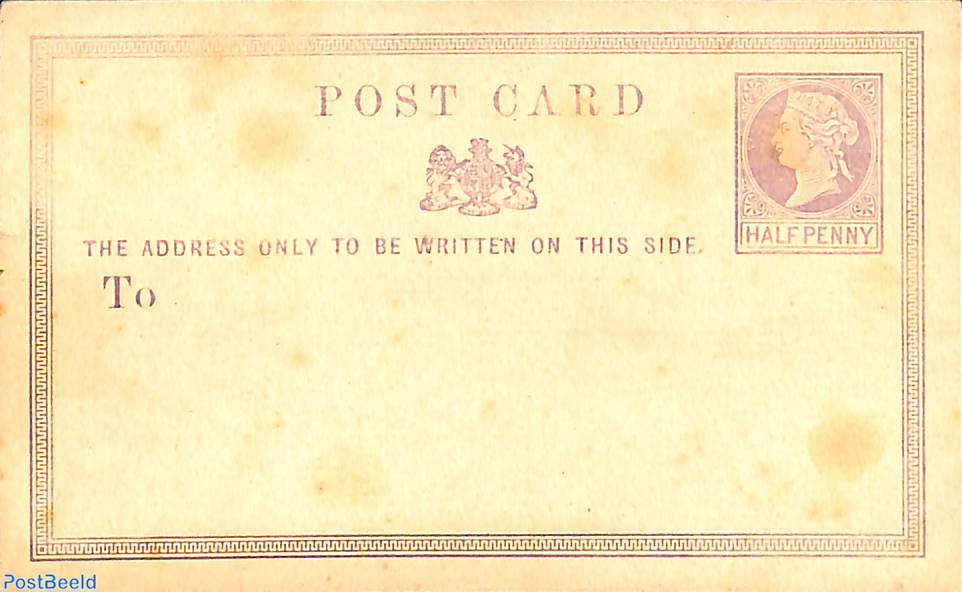
Early in the year Gunner John Maddocks who had escaped from the Island guard room and deserted with his kit – soldiers often pawned or sold their kit to make money – had been recaptured and was court martialled at Devonport. Found guilty he was sentenced to 84 days hard labour and branded with the letter D on his forearm.
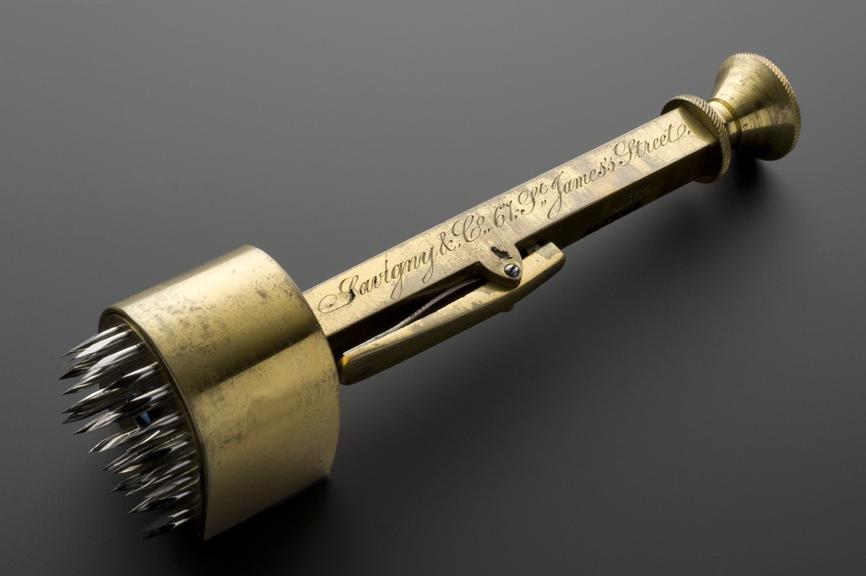
During the spring the Royal Engineers put into action the plan to move the 9 inch 12 ton RML guns that were to arm the casemates onto the Island. The plan had been worked out by Lt Hare. He had tested the existing hoist and found it was not strong enough. As the Blast Shields hadn’t yet been installed and the gap was sufficient the guns could be bought in through the opening. He designed a Gun Wharf to be built at the high water mark under the third casemate from the old Tudor Artillery Tower on the north side of the Island facing the Hoe so sheltered from the worst of any bad weather. The wharf was built out of Red Pine as was the ramp that led up to the entrance of the casemate, a rise of around 10 metres. He then then designed a system using two winches, one each side of the gun using 6 inch diameter cordage to move the guns up the ramp. One end of the cordage was fixed in the casemate and it was then paid down the ramp under and over the trunnion of the gun and back up into the winch which was held in place by a block and tackle. So as the winch paid in it shortened the rope moving the gun. The barrel which faced up the ramp was prevented from digging into the ramp with the use of another length of cordage and a winch. 4 guns could be bought over at a time and offloaded one at a time then winched onto the Island over a high tide period. Remarkably the Engineers could offload one and winch it up the ramp and have it on its way to its final position in only 45 minutes. Although there were 21 casemates only 13 guns were delivered.
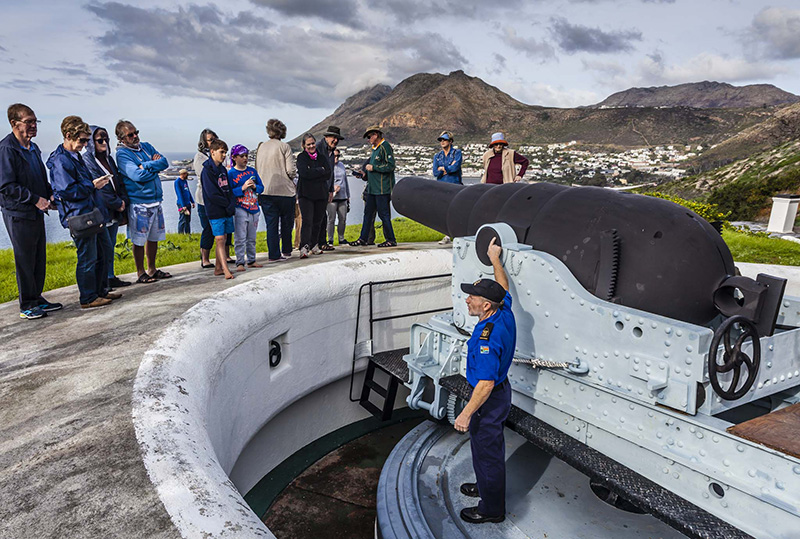

In April the Duke of Cambridge, Commander in Chief of the Army reviewed the garrison and militia forces in Plymouth at Devonport Park which would have involved Richard to some extent both in preparing for the review and on the day itself. Not long after the Review another Gunner, Henry Costello was tried by Court Martial for Desertion. He had absconded with his kit from the Island in late October 1869 and was apprehended by PC Bastin in Ivybridge on 3rd November for stealing a £5 note. Having served 4 months in jail for the theft he was handed over to the military to be tried for desertion. Henry was found guilty and sentenced to 56 days hard labour. This wasn’t the end of the crimes of the 13th Brigade in November. On the 16th Corporal James Kennedy was charged with being absent on leave and of embezzling $13 14s and 11d from the Canteen on the Island. In Plymouth the Candle Works caught fire again four years after the previous fire. The new design of the factory allowed the fire to be contained far more easily than previously although the roof caved in before the first fire engine arrived around 30 minutes after the alarm was raised. Two Royal Artillery Engines manned by the part of the 13th Brigade that was based at the Citadel attended along with the West of England Engine and one from the London, Liverpool and Globe Assurance Company. It was common for Assurance or Insurance firms to own and run fire engines to protect their customers properties but also to limit their losses. Meanwhile the Routledge children reached double figures with the arrival of baby Charles the fourth boy of ten children born to Richard and Mary Ann. By this time the two eldest, both boys had left home. The eldest, William had married Caroline Hannah Dart from Topsham in early 1871. He was earning a living as a Tailor and Caroline worked as a Milliner – a maker of women’s hats. John joined the Royal Navy as a Boy aged 15 in 1870 and was in training on HMS Impregnable at Devonport. Both Richard and Mary would have signed a declaration that John would serve a minimum of 12 years in the Navy.
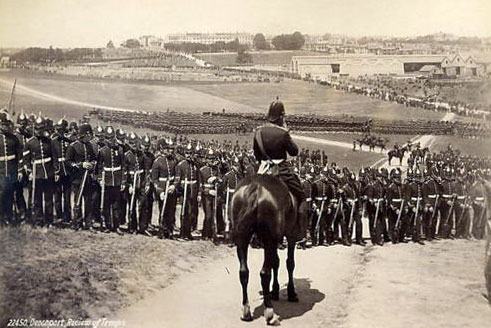
1871 saw more Army reforms. Prior to this infantry soldiers could be drafted into any regiment, Regiments serving abroad had their numbers increased as transport and therefore reinforcement was slow. However steam ships and the Suez Canal, which opened in 1859, sped up reinforcement rates. This allowed the change whereby all regiments wherever they served at home or abroad had the same establishment and didn’t require additional men if they were to be deployed abroad. The country was also divided into military districts for recruiting and although some units were already known by county names prior to this, Regiments were now allocated depots and recruiting areas. Each Regiment had 3 battalions with one serving abroad, one at home and the 3rd Battalion being the Militia Battalion. Branding for deserters was now abolished, the earlier cessation of the bounty had eliminated one of the main reasons for desertion and attempts to re-enlist. There had been some leeway in selling commissions up to this point but the practice was now abolished. The platforms and carriages for the 25 ton RML guns that would form the Upper Battery on Drake’s Island arrived in Devonport from Plymouth in early 1871. The Rugby Football Union was formed in January and the first international between England and Scotland was played on 27th March in Scotland just before the 1871 Census was taken in April . Over on the Island one of the families from the Artillery detachment manning the Island had some good news. Mary Butler, the wife of Corporal John Butler gave birth on the Island to a baby girl they named Mary. She was the sixth child born on the Island in the past decade.
The 1871 Census took place on 2nd April 1871. 36 people were listed as living at the Devon Militia Artillery Stores including the newly promoted Battery Sergeant Major Richard Routledge with Mary Ann and eight of their ten children. Mary Jane, now 15 has left school but the remainder apart from 1 year old Charles are all recorded as Scholars. The eldest, 19 year old William is living with his 18 year old wife Caroline at 49 Duke Street in Devonport with the in-laws and it won’t be long before they are producing children at the same rate as Richard and Mary Ann.
Over on the Island the permanent staff were the Master Gunner Thomas Hillyard and his family along with 3 Gunners, all married. The 49 man Royal Artillery detachment was from 13th Brigade and was commanded by an Irishman Lt Robert Purdy. He had under command Battery Sergeant Major John Peril, 2 Sergeants, 2 Corporals, 8 Bombardiers, 34 Gunners and a Trumpeter. From the detachment 13 were Irish by far the largest contingent, 2 were Scots and 3 Welsh with the remainder split between 16 English counties from Durham to Cornwall. Six families are listed, four from the permanent staff and two from the detachment. There were 6 boys on the Island including the two year old McCabe twins and 6 girls including 3 month old Mary Butler who had been born on the Island. The Brewin family had a young lodger living with them and the oldest person was Mary Butlers Grandmother 71 year old Martha Harris who was widowed and living with the Butlers. Three of the wives are recorded as Laundresses and it would not be unusual for some wives to offer a laundry service to the single soldiers to make some extra coin. In all there were 73 people living on the Island. This is around 30 less than the 1861 Census mainly because the detachment manning the Island was much smaller although there was no civilian Canteen Manager listed. A complete census list for the Island together with what, if any, information I’ve been able to find out about them is below if anyone is looking for a relative who may have served on the Island.
Lt Robert Purdy; 24; Unmarried; Ireland. Robert enlisted in 1868 and after he left the Island took part in the Afghan War and expeditions from 1878 to 1880 during which he was promoted to Captain. He was promoted again to Major and was commanding O Battery at Newbridge in 1888. He was promoted once more before retiring as a Lieutenant Colonel in 1904.
BSM John Peril; 33; Unmarried; Scotland.
Sgt Henry McHugh; 29; Unmarried; Woolwich, Kent. Henry enlisted as a Boy soldier in 1857 aged 15. Not long after the census he married Elizabeth and served another 7 years before being discharged as unfit for service 1878 with Locomotor Ataxy. This is a muscular disease that left Henry weak, in pain and at times unable to walk. The Medical Board felt the condition would be permanent and he would be unable to make a living. On leaving his conduct was described as Very Good and unusually he had no entries in the Defaulters Book and had never been Court Martialled. He had gained a Second Class School Certificate. Unfortunately it appears the disease did worsen and Henry died a year after he left the Artillery in 1879.
Sgt Robert Hollman; 34; Unmarried; Denton, Norfolk
Bdr Alfred Cadd; 22; Unmarried; Eastbourne, Sussex. Alfred took his bounty of £1 and free kit when he enlisted in 1865. He was promoted to Bombardier just before the 1871 Census and just after was promoted to Corporal as the Battery deployed to India where he served until he was discharged as of right in 1888. He was promoted again in 1873 to Sergeant. He married Agnes Kennedy at Fort William in 1876 in St Peter’s the Garrison Church. The couple had five children, George Alfred in 1877, Annie Ruth in 1879, Amelia Florence in 1881 when Alfred was promoted to Sergeant Major and appointed Transport Sergeant Major, Charles James in 1883 after which Alfred was reduced in rank to Sergeant and finally Phillis Mildred in 1885. He was deployed on Upper Burma Campaign from 1885 to 1886 but was admiited to hospital with alcoholism not long after his return. After claiming his discharge as of right in 1888 the family settled in India living at 22 Fordyces Lane, Bow Baazar in Calcutta, present day Kolkata.

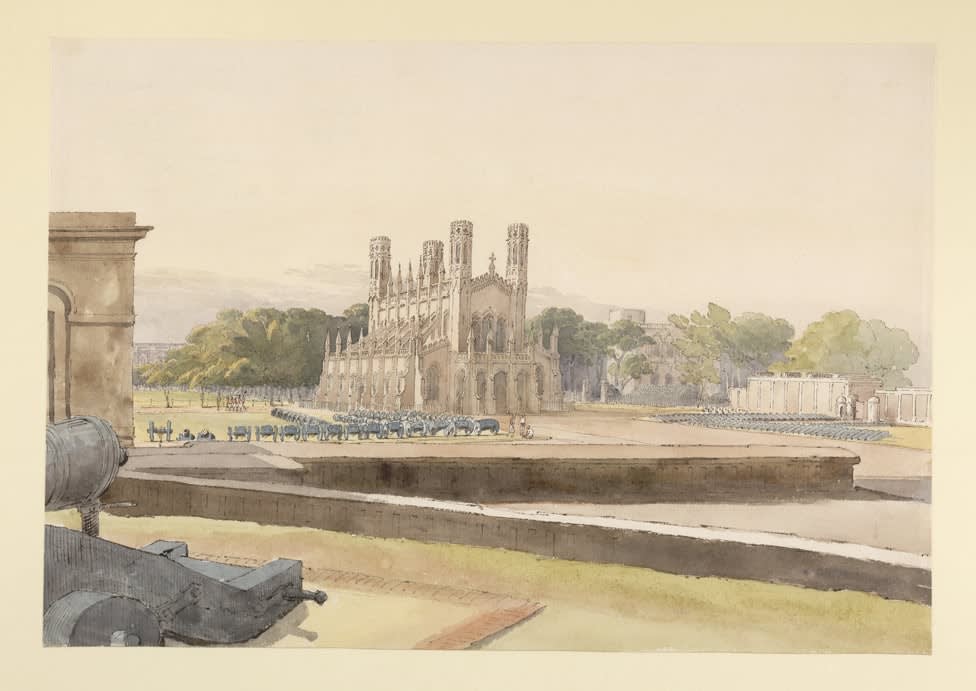
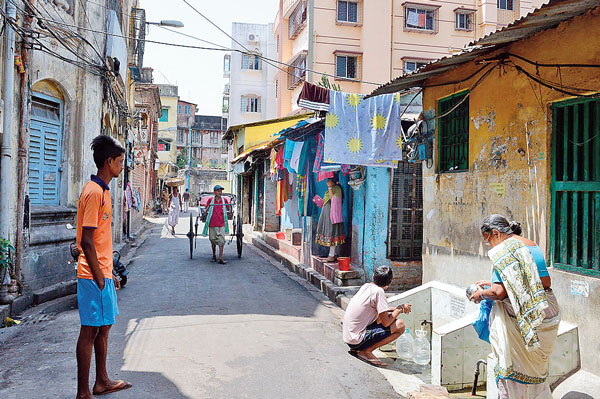
Bdr Frederick Carter; 26; Unmarried; Swinton, Berwickshire
Bdr George Carver; 20; Unmarried; Cropwell Bishop, Nottinghamshire
Bdr John Fraser; 20; Unmarried; Ireland. John enlisted in 1868 and was promoted to Bombardier in 1871 after his Battery was back in the Citadel. He was deployed with the Battery to India later in 1871 and was promoted to Corporal in 1872 and then Sergeant in 1874. He served in India until 1876. He married Emily in Aldershot on his return to Great Britain. They had one son Charles in 1880 but it seems Emily died soon afterwards as John remarried in 1883 to Margaret. They had three children, Robert in 1884, John in 1886 and James in 1888. In the same year John was promoted to Battery Sergeant Major but claimed his discharge as of right the following year. He intended to return and settle in County Meath, Ireland.
Bdr William Nicholls; 21; Unmarried; St Marys, Worcestershire. William enlisted in 1868 but was discharged as unfit for service with Tuberculosis at Fort William in Calcutta after just over 4 years service in 1873. The medical board assessed him as unlikely to be able to contribute to earning a livelihood. He had a first class certificate of education and intended to live in Hilton-on-Dove in Derbyshire.
Bdr Frederick Rainbow; 19; Unmarried; Bromsgrove, Worcestershire
Bdr John Stokes; 20; Unmarried; Purfleet, Essex
Bdr Walter Williams; 27; Unmarried; Bromsgrove, Worcestershire
Gnr Thomas William Adams; 22; Unmarried; Pembroke, Wales
Gnr William Bailey; 23; Unmarried; Leicestershire. William enlisted in 1868 getting his £1 bounty and free kit. He was in Plymouth until 1871 when he deployed with the Battery to India. He took part in the Afghanistabn expedition from 1878 to 1880 and was awarded the Afghan Campaign Medal with clasps for Kandahar and Ali Musjid. He was awarded the Bronze Star for service in the Sudan in 1882 before being posted back to Great Britain and the Artillery Depot at Woolwich. He immediately contracted Syphilis but then met and married Kate in 1885. He was awarded the Long Service and Good Conduct medal and the claimed his discharge as of right at the end of his engagement in 1890. He was awarded a pension of 13d per day. He intended to live in Woolwich.
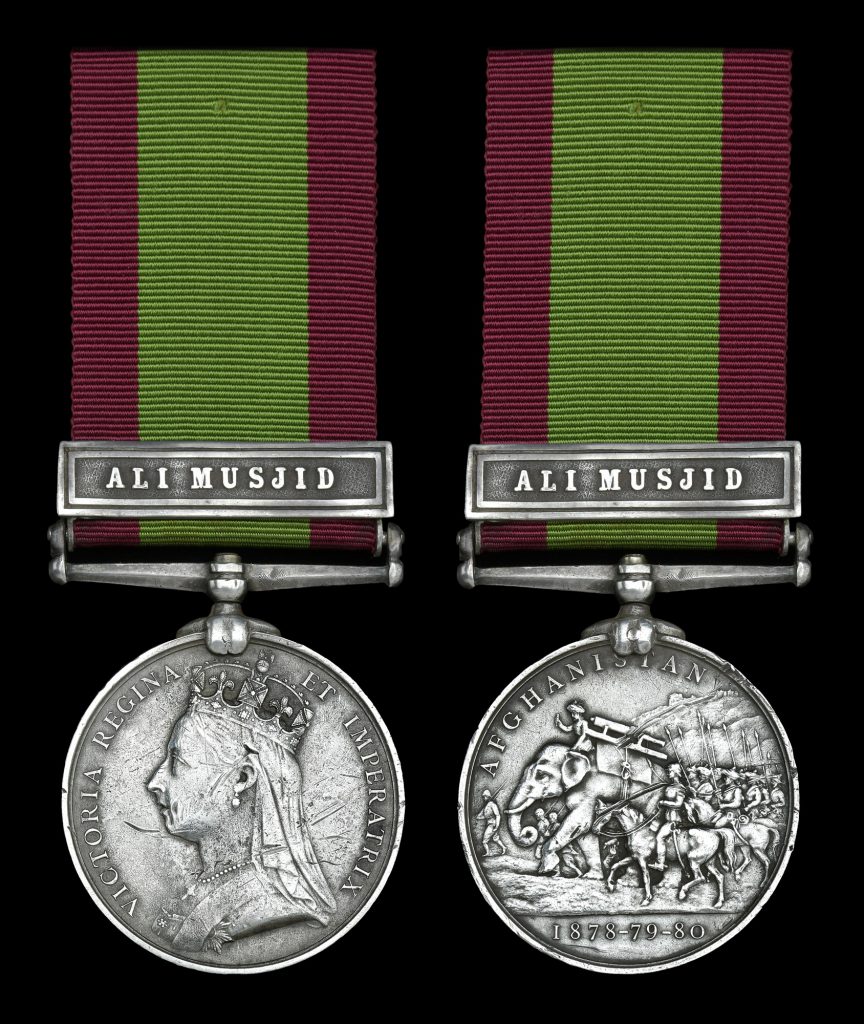
Gnr Edward Beloe; 20; Unmarried; Norwich, Norfolk
Gnr Thomas Christie; 28; Unmarried; Sunderland, Durham. Thomas enlisted in 1861 and was a shipwright by trade. He was discharged in 1872 as unfit for further service and had spent half that time in India. The medical board found his condition, Chronic Rheumatism and heart palpitations was likely to prevent him earning a living. His conduct was Fair having 13 entries in the Defaulters Book and convicted once by Court Martial. He was also tried and imprisoned by the Civil Power in 1868. He married his wife, Suez, not long after being discharged and was earning a living in Monkwearmouth, Sunderland as a Shipwright during the 1881 census. By this time they had three children, Vernon, Noble and Amy Ann.
Gnr Henry Costelloe; 23; Unmarried; Middlesex. This was the same Henry Costelloe who was Court Martialled for Desertion in 1870.
Gnr James Cunningham; 38; Unmarried; Ireland.
Gnr James Davey; 21; Unmarried; Bloomsbury, Middlesex. James was a machinist and initially enlisted in the Middlesex Militia in 1867 before transferring to the Regulars in July of that year receiving his £1 bounty and free kit. He was frequently in trouble up to 1872 mainly for being absent and had a bout of Gonorrhea into the bargain but after he deployed to India in 1871 apart from one incident it seems he settled down. Possibly he was more concerned with his girlfriend Ellen Kidd who he married at Meean Meer (now known as Lahore) in 1875. James gained a 3rd Class Certifcate of Education and they had their first child, James R in 1878. James senior was then deployed to Afghanistan where he would be on campaign until 1880. Daughter Elizabeth came along in 1882 after which James was deployed to Aden until early 1884. Son Alfred was born about 9 months after James returned to India. The family was posted back to the UK at the end of the year. He claimed his discharge as of right after 21 years service in 1888. Although he intended to live in Bermondsey the family ended up in West Ham where James was working as a Labourer during the 1891 census. His eldest James R was working as an errand boy whilst the two youngest were still at school. In 1901 he was still living and working at West Ham with Ellen although all the children had left home.
Gnr John A Deehan; 23; Unmarried; Ireland. John deployed to India after being on the Island. He contracted Cholera in Meean Meer and unfortunately died in 1879.
Gnr John Dowley; 26; Unmarried; Ireland. I can’t find his military record but John had been discharged by 1881 as the census records him living in Sheppey, Kent with his wife Mary and daughters May who was born in Cornwall in 1868 and Anne who was born in Stonehouse in 1874. It seems he must have been discharged sometime in the late 1870’s. He and Mary had another child Alice in 1884. John and the family stayed in the Sheerness area as John found work as a Boiler Maker and then for the local council up until 1911. John passed away in 1921 whilst still living in Sheerness aged 71. His wife Mary passed away a few years later in 1928.
Gnr Frederick Farrell; 24; Unmarried; Ireland
Gnr Denis Farrell; 22; Unmarried; Ireland
Gnr William Gosling; 26; Unmarried; Braintree, Essex
Gnr Peter Haywood; 38; Widower; Manchester, Lancashire
Gnr Robert Harvey; 24; Unmarried; Ireland
Gnr William Hillier; 25; Unmarried; Wiltshire. William took the £1 bounty and free kit and enlisted in 1867. After his time as part of the Plymouth Garrison he deployed with the Battery to India in 1871 where he stayed until 1881. He took part in the Afghanistan Campaign from 1878 to 1880 and was awarded the Campaign Medal with the clasp for the siege of Ali Musjid. He contracted Malaria at Quetta in 1880 and was sent back to Great Britain and was discharged the following year as unfit for service with chronic Rheumatism. He was awarded a pension of 9d per day for 39 months.
Gnr Matthew Judd; 26; Unmarried; Streatham, Surrey. Matthew enlisted in 1867 and was discharged in 1873 as unfit for service. His conduct was bad with 6 entries in the Defaulters Book and three convictions at Court Martial including one for desertion. His discharge was because of Syphilis contracted before enlisting but it seems was a means of discharging a poor soldier something the Cardwell reforms was addressing.
Gnr Henry Kingham; 31; Unmarried; Greenwich, Kent. The only information I have for Henry ia that he passed away in 1885 at Woolwich.
Gnr Thomas Langham; 34; Unmarried; Hinckley, Leicestershire. Thomas enlisted in 1854 and was discharged as of right in 1876. He served for 6 years in India and for 9 months of that took part in the Crimean War being awarded the Crimean Medal with clasp for Sebastopol and Turkish War Medal. His conduct was Good despite a lively first 6 years of service where he was entered in the Defaulters Book 8 times and was Court Martialled once. He intended to live back In Hinckley but the pension records show him drawing the pension in Coventry.
Gnr William George Lunnon; 19; Unmarried; Poplar, Middlesex. William took the £1 bounty and free kit and enlisted in 1870. After his time in Plymouth he was transferred to a different Battery and was posted to Malta where he served for 8 years. He was discharged as unfit with disease of the heart in 1884. His character on discharge was Indifferent having been charged 15 times with various offences including absence, absence without leave and drunkenness. Due to his medical condition he was awarded a pension of 8d per day for life.
Gnr Thomas Mason; 27; Unmarried; Brighton, Sussex. Thomas enlisted in 1867 and after his stint in Plymouth deployed with the Battery to India. He was discharged as unfit for further service due to Tuberculosis contracted in Calcutta. His conduct was Indifferent having 22 entries in the Defaulters Book and having been convicted twice by Court Martial, once for being drunk on the Island. He intended to live in Lichfield after discharge.
Gnr James McGregor; 25; Unmarried; Scotland
Gnr John McKearn; 25; Unmarried; Ireland. John, a labourer from Londonderry enlisted in 1866 at Liverpool. He received a £1 bounty and free kit. After his stint on the Island John was posted to India for two years before returning to Great Britain and a posting to Ireland where he met and married Elizabeth Doherty in 1874. Daughter Annie was born a year later after which the family was posted to St Helena for two years until 1879. The family was posted to the Isle of Wight where they were recorded for the 1881 census. John was discharged as of right after 21 years service. His character was described as Very Good and he was granted a pension of 12d per day for life. The family moved to Dalziel, Lanarkshire where John was working as a labourer for a Bridge Builder during the 1891 census. By the time of the 1901 census John and Elizabeth were living in Calderwood, Lanarkshire with daughter Annie who had married Daniel Gaitens with whom she had had three daughters. John passed away in 1928 aged 82.
Gnr Michael Middleton; 19; Unmarried; Ireland
Gnr Edwin Morley; 20; Unmarried; Redruth, Cornwall
Gnr Samuel Parkyn; 19; Unmarried; Truro, Cornwall
Gnr John Smith; 22; Unmarried; Longton, Lancashire
Gnr John Souter; 46; Unmarried; Scotland
Gnr Thomas Tilley; 22; Unmarried; Leicester. Thomas was a Framework Knitter who was out of work when he enlisted in 1866. Framework Knitting was a cottage industry that usually involved the whole family working at home weaving cloth. However it was a dying industry as industrial looms took over the work in factories. It was a widespread industry based mainly in the Midlands and led to unemployment and hardship in the Leicestershire, Derbyshire and Nottinghamshire areas especially. Probably desperate for the money Thomas had initially enlisted in the Leicestershire Militia but soon after joined the Regulars for the £1 bounty and free kit. Straight after his posting to Plymouth and the Island Thomas was sent abroad to India where he spent the rest of his career. He was promoted to Bombardier in 1873 then Corporal in 1875 and Sergeant in 1876 when he narried Sarah Ann Marsh in Bengal. They had three children, Alice Maud Mary born in Bengal in 1878, Elizabeth Blanche another Bengal baby who came along in 1880 and finally Ethel Isabel born in Agra in 1886. Thomas was discharged in 1894 as of right after 28 years service.
Gnr George Wells; 29; Unmarried; Cheltenham, Gloucestershire
Gnr Benjamin Williams; 22; Unmarried; Abergilly, Carmathenshire, Wales
Gnr John Wilson; 26; Unmarried; Ireland
Gnr Speers Wilson; 19; Unmarried; Ireland. Speers was still serving in 1881 when he was recorded as an unmarried Gunner serving with F Battery of the Royal Horse Artillery in Canterbury Kent.
Gnr Mark Witherall; 24; Unmarried; Dinnington, Somerset
Gnr Walter Wilding; 24; Unmarried; Suffolk
Trumpeter James Drakeley; 17; Unmarried; Chatham, Kent
Families
Cpl Andrew Watson; 33; Married; Ireland. Andrew enlisted in 1855 and served for over 5 years in India from 1857 to 1863 when he was promoted to Bombardier. Further promotions came in 1867 to Corporal and 1873 to Sergeant. He was discharged as of right after 21 years service as a Sergeant in 1878. He enlisted as a Sergeant in the Militia on leaving and was an instructor in Redruth, Cornwall for the 1881 census with all the family except his son Andrew who was living a lodger in Glamorgan. By the time of the 1891 census the whole family was back together in Glamorgan. Andrew senior was living off his pension, his son Andrew was working as an inspector with Taff Vale Railway, William was working as a Pork Butcher whilst Martha had married a Royal Engineer Edward Clapson who also lived with the family along with their 1 year old daughter and the Granddaughter of Andrew and Louise, Isabella.
Louise Watson; 33; Plymouth .Devon; Laundress
Andrew Watson; 13; Plymouth, Devon; Scholar
Martha M Watson; 7; Plymouth, Devon; Scholar
William Watson; 1; Plymouth, Devon
Cpl John Brewin; 31; Married; St Margarets, Leicester. John enlisted in 1857 and was previously another Framework Fitter who could not find work. He was quickly promoted to Bombardier and then Corporal in 1n 1858. He was just as quickly tried and found guilty then reduced to Gunner in 1859. He was promoted back to Bombardier in 1868 and then to Corporal in 1870 just before the Census. Then in 1872 he was tried found guilty and reduced to Gunner in 1872. He was promoted back to Bombardier in 1875 and then discharged as unfit in 1879 after 21 years service. He had served abroad in China and India and it was whilst in India that he got a hernia in his lower abdomen whilst loading a Camel. That was in 1877 and the condition worsened over the next 2 years. Despite the medical board assessment that the condition would be permanent John found work as a Hospital Porter at the Royal Portsmouth and Gosport Hospital where he was still working in 1881. His Ann had found employment as a Lodge Keeper and servant at the same hospital.
Ann Helena Brewin; 34; Bristol, Somerset; Laundress
John A Heywood; 8; Plymouth, Devon ; Scholar (Lodger)
Master Gunner Thomas Hillyard; 49; Married; Ireland. Thomas had enlisted and was a Corporal serving in Devonport in 1851 when he married Mary Ann. The family was India for the 1861 Census and were still there when their son William was born. The family was in Dover by 1867 and was then posted to the Island to fulfil the role as Master Gunner. A year after the census he was posted to Canada where he was discharged in 1874. He was granted a pension of 3s 3d per day and was drawing it in Toronto. The family stayed in Canada where William became a Tobacconist and Thomas worked as a Tailor.
Mary Ann Hillyard; 39; Plymouth, Devon
Emma Hillyard; 17; Plymouth, Devon
William Hillyard; 10; East Indies; Scholar
Thomas Hillyard; 7; Plymouth, Devon; Scholar
Martha Hillyard; 4; Dover, Kent
Gnr Michael McCabe; 36; Ireland. Michael enlisted at Crossmaglen in 1855. He claimed his discharge as of right in 1877 when he was eligible for a pension after 21 years service. He had spent over 5 years in India and his conduct was described as Very Good with only 4 entries in the Defaulters Book. He intended to live and work at Errwood Hall, Buxton in Cheshire after leaving.
Wife Ellen McCabe; 28; Plymouth, Devon; Laundress
Elinya McCabe; 6; Dover, Kent; Scholar
George McCabe; 2; Dover, Kent
Charles McCabe; 2; Dover, Kent
Ellen McCabe; 1; Shoeburyness, Essex
Gnr Alfred Chapman; 39; Married; Sherborne Dorset. Alfred had been discharged by the 1881 Census. His wife Francis must have died sometime before as he is recorded as a widower working as an Innkeeper and living at 6 Pound Street in East Stonehouse which was the site of the Artillery Arms. Living with him was the Housekeeper Mary Weeks and her two daughters, 16 year old Kate who worked as a barmaid and 13 year old Harriet who was a scholar. The Pub still survives and serves pints in Stonehouse.
Francis Chapman; 42; Gravesend, Kent
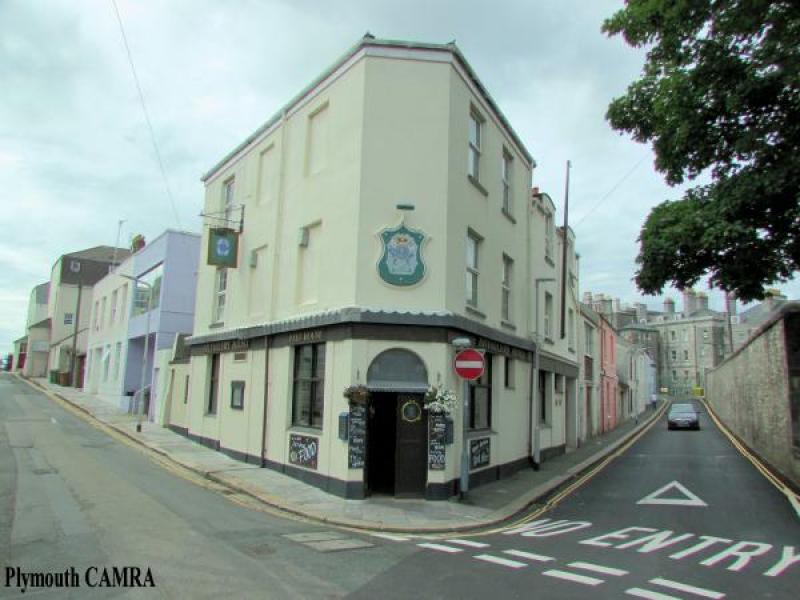
Gnr John Butler; 34; Married; Ireland. John enlisted in 1855 and after 21 years claimed his discharge as of right being eligible for a pension in 1876. He had served over 5 years in Malta, his conduct was Very Good with only one entry in the Defaulters Book and never having been Court Martialled. He was discharged in Londonderry and intended to live in Ireland.
Mary Butler; 25; Ireland
Mary Butler; 3 months; Drake’s Island, Plymouth, Devon
Martha Harris; 71; Guernsey; Mother-in-law

Very interesting military history
Brilliant article
Thanks Malc, glad you enjoyed it